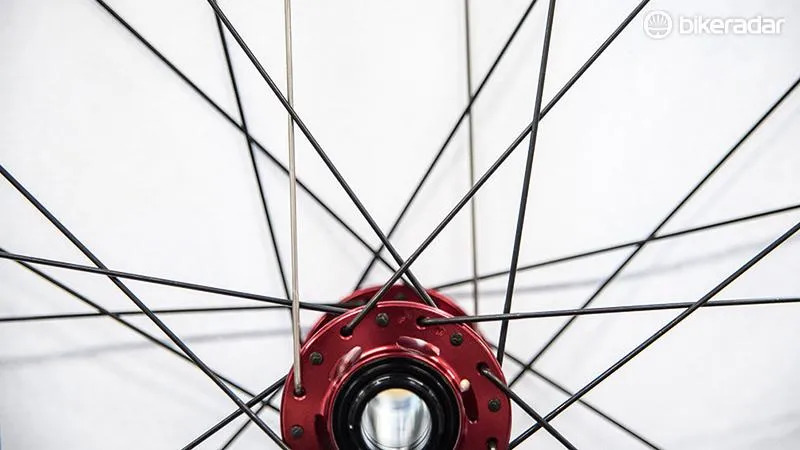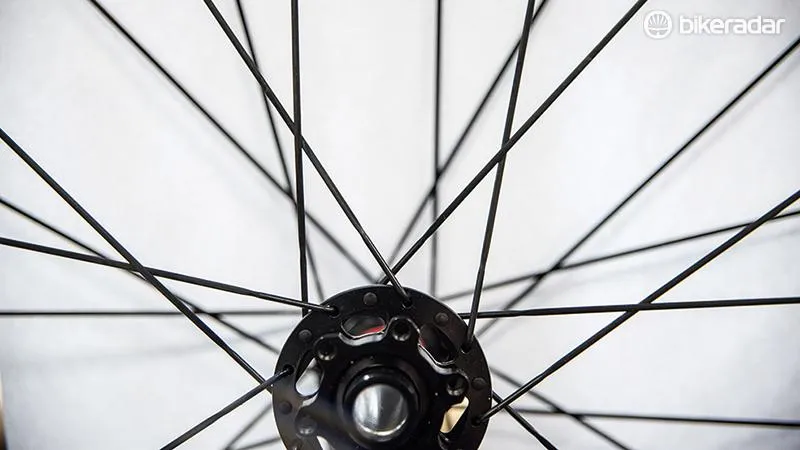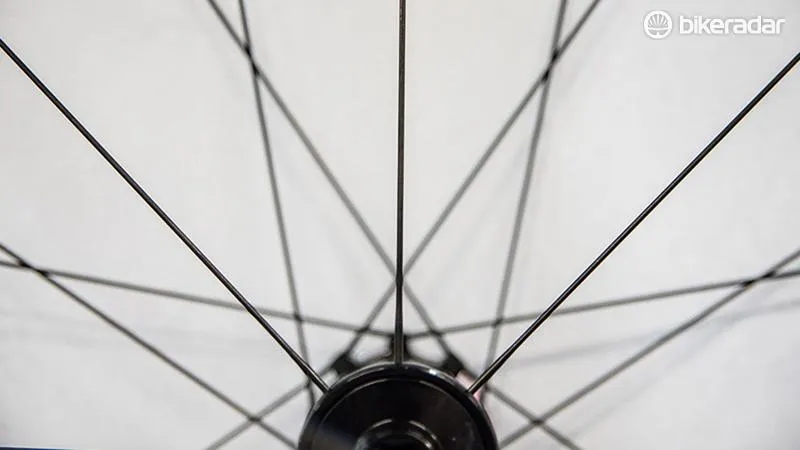Spokes are arranged in all sorts of ways with the most common being a three-cross pattern. But why are the spokes laced this way and why are they sometimes set up differently? Here's our quick bluffer's guide to spoke lacing.
1. Three-cross

The most common way for a wheel to be laced is with 32 or 36 J-bend spokes, arranged in a three-cross pattern.
This means that every spoke intersects three others between the hub and the rim.
Crossing the spokes over helps them handle the pedalling and braking torque being transmitted from the hub to the rim.
2. Two-cross

High-end wheels with straight-pull spokes often use just 28 or 24 spokes to save weight.
This is possible because straight-pull spokes can be tightened to higher tensions than J-bend spokes.
They’re often laced two-cross, because the lower spoke count means there are fewer spokes to cross over.
3. Two-to-one

On the front hub, the non-driveside flange (the one next to the brake rotor) is closer to the centre of the hub than the driveside flange is.
The non-driveside spokes therefore require a higher tension to keep the wheel straight.
To compensate for this, some Roval and Fulcrum front wheels have twice as many spokes on the non-driveside as the driveside.
4. Mavic Isopulse

On the rear wheel, it’s the driveside flange that’s closest to the centre, so its spokes are under greater tension.
Mavic’s Crossmax wheels use a radial (non-crossed) spoke pattern on the driveside.
This improves the spoke angle to ease the load on the driveside spokes, while the non-driveside is laced two-cross to deal with braking and pedalling torque.
